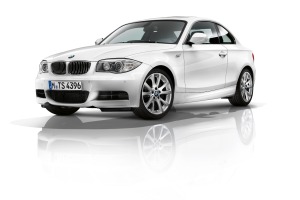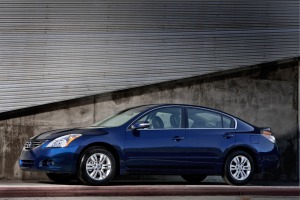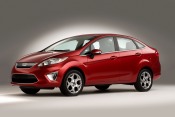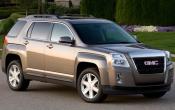- Save |
- Email |
- RSS |
- Newsletter
What You Should Know Before Buying a Mobility Vehicle
Mobility Vehicle Buying Guide | What You Should Know Before Buying a Mobility Vehicle | View Other Buying Guides
Ignition
Does the vehicle you're considering feature a dash-mounted ignition? Steering-wheel-mounted ignitions require a twist of the wrist to get the car started — a challenge for those with upper-body mobility challenges. Dash-mounted ignitions get the vehicle moving with less dexterity required of the driver. Several manufacturers now offer a keyless start-up feature that entirely eliminates the need to insert a key.
Transmission
Is your potential new vehicle equipped with an automatic transmission? Wheelchair users relying on hand controls will have difficulty shifting manually. Fortunately, virtually all vehicles nowadays are available with an automatic transmission.
Controls
Are the vehicle's knobs and switches large and easy to identify? Tiny knobs and switches can be daunting for those with conditions such as arthritis; here, bigger is definitely better. Additionally, a vehicle whose switchgear favors buttons over knobs is ideal, as buttons are easier for those with upper-body mobility challenges to navigate. Are the controls well-placed? Ideally, controls should be strategically grouped so as to minimize stretching and reaching on the part of the driver. Some luxury vehicles are equipped with touchscreen and/or voice-activated controls. If these options are within your budget, they're worth considering, as they can go a long way toward ensuring that your time spent in the driver seat is comfortable and headache-free.
Shifter
Is the vehicle equipped with a buttonless shifter? Many shifters require drivers to depress a button in order to shift from "Park"; this maneuver can be painful for some arthritis sufferers, and impossible for those with more severe upper-body mobility issues. With a buttonless shifter, the need for such dexterity is eliminated. All vehicles equipped with steering column-mounted shifters offer buttonless shifting. Some automakers have gone even further, engineering electronic shifters that are both buttonless and extremely easy to move between gears; the shifters in the Toyota Prius and BMW 7 Series are especially user-friendly.
Locks and Windows
Does your potential new purchase feature power locks and windows? Manual locks and windows can be difficult to navigate. And if you're operating your vehicle via hand controls, bear in mind that power windows are especially useful at toll booths, when one hand will have to be on the steering wheel, and the other, on the brakes. Most vehicles with power windows offer a one-touch "down" feature for the driver window, and increasingly, one-touch "up" convenience is available as well. Luxury vehicles typically offer one-touch control for all windows.
Seats
For people with certain mobility challenges, bench seats are preferred, as they are roomy and easy to access. Also, does the vehicle offer a power-adjustable driver seat? Power-adjustable seats — preferably with eight-way adjustment or higher — allow drivers to alter the seat to best suit their physical needs. Heated seats are an option available with more and more vehicles. These seats are especially helpful for arthritics, as they warm the joints to alleviate soreness. Many luxury vehicles offer a heated steering wheel option as well.
Entry
Is the vehicle you're evaluating equipped with remote keyless entry? The twisting that's required to place a key in a lock and open a car door can be difficult or impossible for those with upper-body mobility issues. Remote keyless-entry systems make getting into your vehicle a snap. Also, are door openings wide enough to allow easy ingress and egress? For those with lower-body mobility challenges, wider door openings help facilitate easy loading and unloading of wheelchairs or mobility scooters. Carefully evaluate your vehicle to ensure that you're able to come and go with ease.
Pedals
Does the vehicle you're considering offer adjustable pedals? This feature allows the driver to ergonomically optimize his or her seating position so that the vehicle may be powered with minimum strain on the legs and feet. For those suffering from stiffness in their lower limbs, this feature goes a long way toward enhancing driver comfort.
Cruise Control
Does the vehicle that you're evaluating offer cruise control? Cruise control frees the driver from having to keep his or her foot on the gas pedal, and can be very helpful for those with lower-body mobility issues. Even more useful is adaptive cruise control, which automatically decreases vehicle speed, if necessary, to keep a safe distance between you and the vehicle in front of you. Adaptive cruise control allows the driver to use the brake pedal less often, and is therefore another valuable convenience for those with lower-body mobility challenges.
Availability of Handicap-Capable Models
Some van manufacturers offer factory-installed mobility packages targeted toward both those with mild-to-moderate mobility challenges (this category includes those facing issues such as arthritis, as well as some senior citizens) and the severely disabled. These packages consist mainly of deletions designed to facilitate the transportation of mobility-related equipment. High paraplegics and quadriplegics (wheelchair users with limited upper-body mobility) are unable to fold a wheelchair and pull it into a car. Those facing this challenge are best served by a handicap-capable van offering features such as lowered floors and automatic ramps. Conversion companies such as Independent Mobility Systems (IMS) can outfit certain minivans with this type of mobility equipment. The Chrysler Town & Country, Dodge Grand Caravan, Honda Odyssey and Toyota Sienna may all be equipped with this conversion.
Another alternative is the VPG MV-1, a purpose-built mobility vehicle that was recently launched by Vehicle Production Group of Miami. Costing about $40,000, the MV-1's list of mobility features includes a ramp strong enough to accommodate heavier wheelchairs, an anti-slip floor and a restraint system designed to keep wheelchairs safely bound. Unlike other choices in this segment, the MV-1 may be optionally equipped with a compressed-natural-gas fueling system.
Mobility Programs
Many manufacturers offer mobility programs that give out reimbursements to offset the cost of vehicle conversion. Chrysler, Ford, GM, Honda, Hyundai and Toyota all have mobility programs in place. NHTSA also offers information on other cost-saving programs for mobility-challenged drivers.
More Information About Mobility Vehicles
Advertisement
Advertisement




